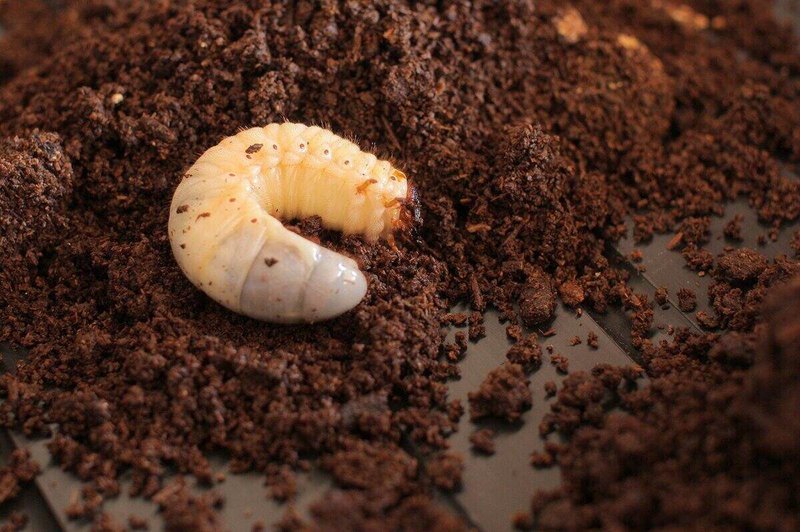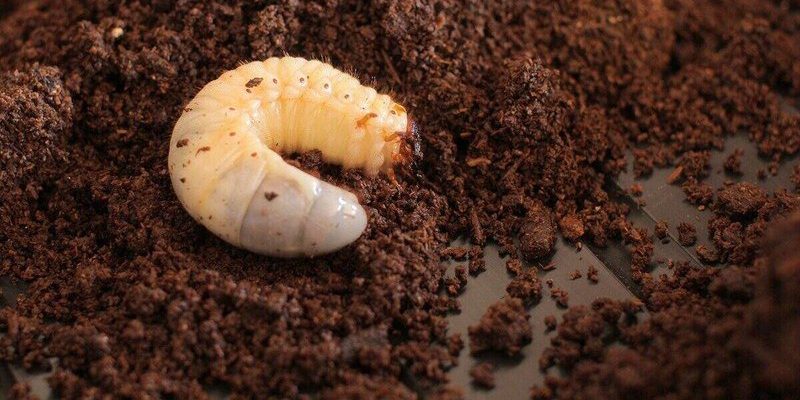
So, picture this: each time you apply Milky Spore, it’s like sending in an army of tiny soldiers to battle those pesky grubs. Instead of reaching for harsh chemicals, you’re using nature’s own defense. In this guide, we’ll break down how to use Milky Spore effectively, making it easy for you to take back control of your lawn and garden.
What Is Milky Spore?
Milky Spore, or *Bacillus popilliae*, is a naturally occurring bacterium that targets grubs—particularly the larvae of Japanese beetles. When these grubs ingest the spores, they become infected, leading to their demise. The best part? As they die, they release more spores into the soil, creating a self-sustaining cycle of grub control.
Unlike synthetic pesticides, Milky Spore is considered safe for humans, pets, and beneficial insects. This means you can feel good about using it in your garden without worrying about harming the friendly critters that help your plants thrive. Imagine having a natural solution that not only tackles a problem but does so in an eco-friendly way.
You might be wondering how long this magic lasts. Once established, Milky Spore can remain active in the soil for **10 years or more**, given the right conditions. This durability makes it a fantastic choice for long-term grub control.
When To Apply Milky Spore
Timing is crucial for Milky Spore to be effective. The best time to apply it is in late spring or early summer, around the same time as the grubs are hatching. Typically, this falls between May and July, depending on your location. Applying the spores during this window ensures that the grubs are present to ingest them.
Here’s a pro tip: before you apply, you might want to assess your yard for grub populations. If you’re noticing the telltale signs of grubs—like those patches of dead grass or increased animal activity—then it’s a sign that it’s time to act. The more mature the grubs, the tougher they can be on your lawn, so applying Milky Spore when they are just hatching is a strategic move.
If you’re unsure about the timing in your region, consider reaching out to your local cooperative extension office. They can provide valuable information on local grub populations and the best times to apply Milky Spore in your area.
How To Apply Milky Spore
Applying Milky Spore is quite straightforward, even for a beginner. Here’s a simple guide to get you started:
1. **Prepare your lawn**: Mow your grass to about 2 inches high, which helps the spores reach the soil more effectively. Remove any debris, like leaves or branches, that might block the application.
2. **Choose the right product**: Milky Spore usually comes in powdered form, and you can find it at garden centers or online. Some products may be mixed with a carrier, so check the instructions on the package.
3. **Application method**: You can spread the spores by hand or use a broadcast spreader. If you’re applying by hand, wear gloves to avoid direct contact with the powder. Aim for an even distribution across your lawn, focusing on areas showing signs of grub damage.
4. **Water it in**: After applying, give your lawn a gentle watering. This helps activate the spores and gets them into the soil where they can do their work.
Remember to follow the product’s instructions carefully for the best results. If you’re applying in a large area, consider breaking it up into sections to ensure even coverage.
Tips for Maintaining Effectiveness
Once you’ve applied Milky Spore, there are a few steps you can take to ensure its effectiveness over time. Here are some tips:
– **Keep the area moist**: While you don’t want to saturate your lawn, maintaining a consistent level of moisture helps the spores thrive. Consider watering lightly every few weeks if there hasn’t been significant rainfall.
– **Avoid harsh chemicals**: Using traditional pesticides can disrupt the Milky Spore. If you’re dealing with other pests, look for organic solutions that won’t interfere with the beneficial bacteria.
– **Monitor your lawn**: Keep an eye on your lawn for any signs of returning grubs. If you notice damage returning, it could be time for another application.
– **Mix with other treatments**: If you have a severe infestation, you can combine Milky Spore with other natural pest control methods like nematodes, which target grubs at different stages of their life cycle.
Staying vigilant and making some small adjustments can greatly enhance the longevity of Milky Spore, keeping your lawn healthy and grub-free.
Understanding the Lifespan of Milky Spore
One of the standout features of Milky Spore is its long lifespan. Once applied, it can remain in the soil for a decade or even longer if conditions are right. But what does that mean for you as a gardener?
The spores can remain dormant until grubs are present, which creates a self-sustaining cycle of grub control. Essentially, every time a grub is consumed by the bacteria, it can produce thousands of new spores, spreading the effectiveness throughout your lawn.
However, the lifespan can be affected by several factors, including soil temperature, moisture levels, and soil type. Warmer, moist soils tend to help the spores thrive, while extreme drought or cold can limit their effectiveness. Being aware of these conditions will help you track how well your Milky Spore is working.
So, if you’re in an area with fluctuating weather conditions, pay attention to your lawn’s health, and consider applying Milky Spore at the recommended intervals for continued success.
Common Mistakes to Avoid
When using Milky Spore, it’s easy to make a few common mistakes. Here are some pitfalls to watch out for:
– **Applying at the wrong time**: As we discussed earlier, timing is key. Applying Milky Spore outside the peak grub-hatching time won’t give you the results you want. Make sure to stick to that late spring to early summer window.
– **Over-application**: More isn’t always better. Using too much Milky Spore can lead to waste and won’t necessarily enhance your results. Follow the recommended application rate for the specific product you’re using.
– **Neglecting lawn care**: Just because you’ve applied Milky Spore doesn’t mean you can let your lawn go. Regular maintenance, like mowing and watering, is essential in keeping your lawn healthy and supporting the Milky Spore’s effectiveness.
By avoiding these mistakes, you can set yourself up for success and enjoy a lush, green lawn free of grubs.
Final Thoughts on Milky Spore
Using Milky Spore for long-term grub control is like having a secret weapon in your gardening toolkit. It’s a natural, eco-friendly option that not only tackles grubs but also enhances the health of your lawn over time. By understanding when and how to apply it, along with some simple maintenance tips, you’ll be well on your way to a vibrant garden.
So, next time you spot those pesky grubs or notice some dead patches in your grass, remember that there’s no need to panic. With Milky Spore in hand and this guide to follow, you’re ready to tackle the problem head-on. Happy gardening!

